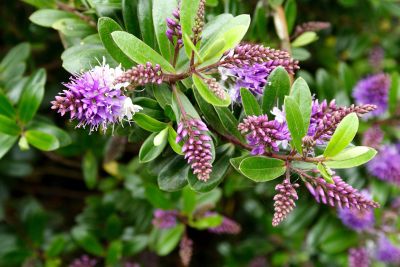What are Hebe Shrubs?
The majority of hebe shrubs are native to New Zealand. They range in size from small bushes that may grow about 3 feet (1 m.) tall to larger tree-like varieties reaching heights of up to 6 feet (2 m.). There are also both large and small-leafed types available. While evergreen in nature, their foliage provides year-round interest with additional colors in burgundy, bronze or variegated. Most hebes bloom in summer and last throughout fall. Some varieties even offer winter blooms. These spiked flowers also come in a range of colors—from white, pink and crimson to blue and purple.
How to Grow Hebe Plants
Growing a hebe plant is easy. The versatility of these shrubs allows you to grow them in different ways. Use them for edging, plant them in borders, grow them in rock gardens or even in containers. Hebe shrubs are most suited for areas with cool summers and mild winters. They adapt to a variety of soil types but will perform best in loose, well-draining soil. They can be grown in both sun and shade, though full sun is preferable, as plants grown in shade may become leggy. Young plants should be potted up in spring. Planting hebe in the garden should be at the same depth as the container they are growing in. Adding organic matter or compost to the soil during planting will help promote healthy growth.
Hebe Plant Care
The hebe plant does not require a lot of care once it is established. Although the shrub doesn’t need much in the way of fertilizer, you can apply some once a year in late winter or early spring prior to new growth. Deadheading the spent blooms can be done to help promote additional flowering. You can also trim hebe plants back about halfway after flowering to promote bushier growth. These shrubs are usually propagated through both seeds and semi-hardwood cuttings taken in summer. In areas with harsher winters, they should be protected by surrounding them with straw mulch.
